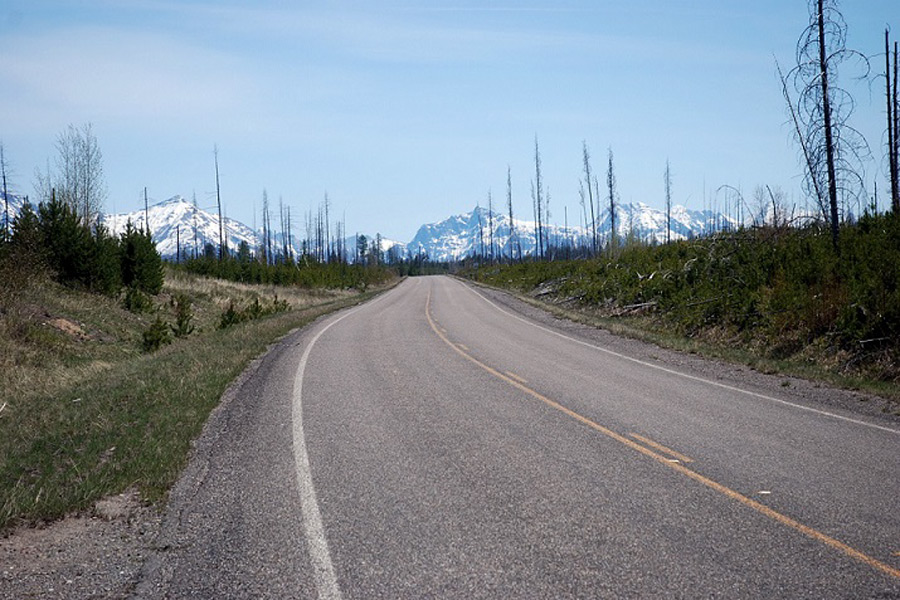The Camas Creek Cutoff Road has been listed as a place of statewide historic significance in the National Register of Historic Places, the National Park Service announced.
The Camas Road is a two-lane, asphalt-paved road located mostly within Glacier National Park. The road begins at an intersection with Going-to-the-Sun Road and spans approximately 11.7 miles to the North Fork Road, just outside Glacier Park and within the boundaries of the Flathead National Forest.
Camas Road is a well-preserved example of mid-20th century roadway engineering and construction within a national park. The road remains in its original location and retains most of its original design. It features two bridges, the McDonald Creek Bridge and the North Fork Flathead River Bridge, as well as the Flathead River Overlook.
The Camas Road was constructed between 1960 and 1967 and cost approximately $2.5 million. The road was designed to provide improved access to the North Fork of the Flathead River. It was also designed as a segment of the never-completed “International Loop Road” to Waterton Lakes National Park.
The road was constructed under the Mission 66 program, which worked to modernize National Park Service infrastructure from 1956-1966. Over those 10 years, more than $1 billion was spent to build and improve National Park Service facilities and roads to accommodate for increased visitor use. Mission 66 projects within Glacier National Park include new housing, visitor centers, campgrounds, as well as improvements to Going-to-the-Sun-Road.
The construction of the Camas Road was one of the largest Mission 66 projects within the park. It was also one of the largest entirely new roadways constructed under the Mission 66 program.
The Camas Road was constructed partly in response to a proposal to build a large dam on the North Fork of the Flathead River. Proposed by the Army Corps of Engineers and the Bureau of Reclamation, the “Glacier View Dam” would have created a reservoir covering thousands of acres of the park’s land. Park administrators hoped that by improving access and increasing visitation to the North Fork, they could prevent the construction of the dam and preserve the area’s primitive status. Park administrators also hoped the road would provide an east-west alternative to the Sun Road.
Since opening in 1933, the Sun Road had become the park’s most popular attraction and it was feared that increased visitor traffic would soon overwhelm the road. Administrators thought that the construction of a road into North Fork and eventually into Canada would encourage visitors to see other parts of the park. Neither the dam nor the International Loop Road was completed, but the Camas Road continues to provide visitor access to the North Fork.
The National Park Service’s National Register of Historic Places is the official list of places worthy of preservation within the United States. Learn more about the National Register at http://www.nps.gov/Nr/.
